What to look for when buying a used JCB telehandler
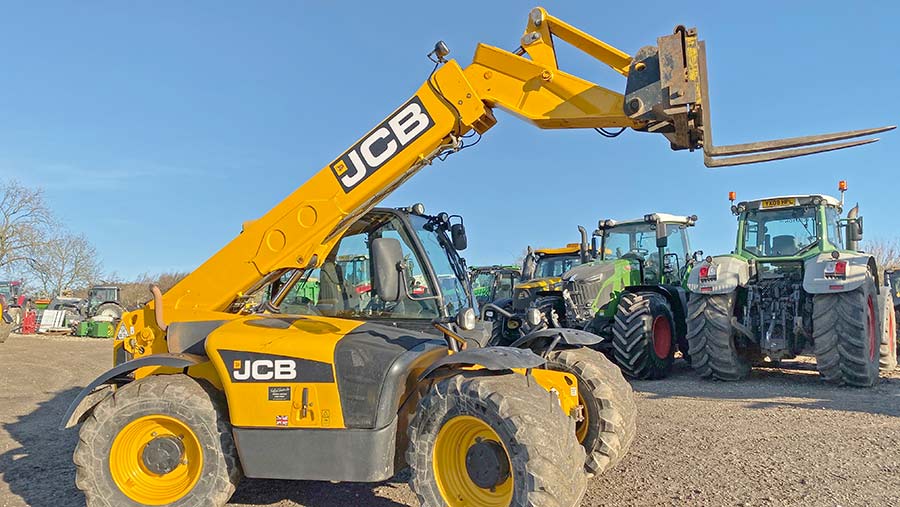
The process of buying any second-hand machine is full of pitfalls, but with telehandlers it can be particularly fraught, given how they can be used and abused on a daily basis.
On a busy farm, these machines can be driven by anyone and everyone and often don’t get the love they deserve from day to day, particularly in peak periods.
For Ian Scruton, director at Wilfred Scruton, service history and signs of poor routine maintenance are the biggest things to consider when going for a second-hand machine.
See also: Tips for buying a used Matbro telehandler
Where JCB Loadalls are concerned, those with a proper service history and a caring previous owner hold their value well compared with competitor brands, so for a particular budget, you may get a newer, higher-spec model of an equivalent Merlo or Manitou.
General buying advice
However, Mr Scruton assures buyers that despite the initial outlay being higher, his dealership often finds that the lifetime costs are lower due to JCBs having the edge on reliability. Parts are competitively priced, too.
He also recommends buying through a reputable dealer, as all telehandlers that come into the firm’s depot have a complete overhaul and are sold with a lifting operations and lifting equipment (Loler) regulations certificate.
This is an obligation for all businesses operating lifting equipment at work – including farms – and gives an indication that the machine is in good, safe working order.
Inspections should be carried out by “competent” people, with several of Mr Scruton’s engineers adequately qualified to grant Loler certificates on all the second-hand machines sold out of the firm’s two depots.
The criteria for a Loler certificate is a good place to start when looking around a used handler, and information can be found on the Health and Safety Executive (HSE) website.
Often, dealers will offer about three months’ warranty, which gives buyers peace of mind that they won’t have to splash too much more cash in the short term.
However, for those buying privately, unexpected costs could be a risk, so Mr Scruton offers some advice on what to look out for when self-sourcing a mid-sized telehandler for about £30,000.
In this price bracket, buyers can expect to get something similar to the 2012 536-70 Agri Plus currently in his workshop for a check-up.
Hours
Mr Scruton says the very first thing he would do when looking at a machine is check the hours on the clock and make sure they tally with what has been advertised initially.
On a 536-70 of this age, remember that the ignition and lights need to be switched on before hours are revealed in the digital display to the right of the steering column, in the middle of a cluster of gauges that include fuel level, water temperature and engine rpm.
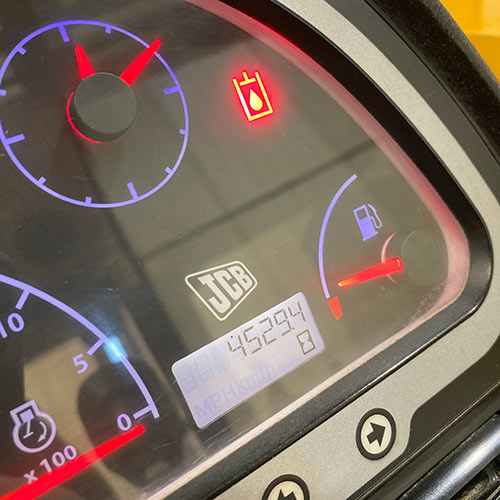
Dashboard screen
External appearance
This particular 536-70 worked on an arable unit producing potatoes and combinable crops, so will have been used for a variety of tasks.
You can often tell how a machine has been treated by its external appearance, so look for general bumps and scrapes that are a tell-tale sign of abuse.
Our model has a dent in the engine pod hood, which is only cosmetic, but ideally would be fixed and would cost in the region of £100 to fill and respray. A complete hood replacement would be almost £1,300.
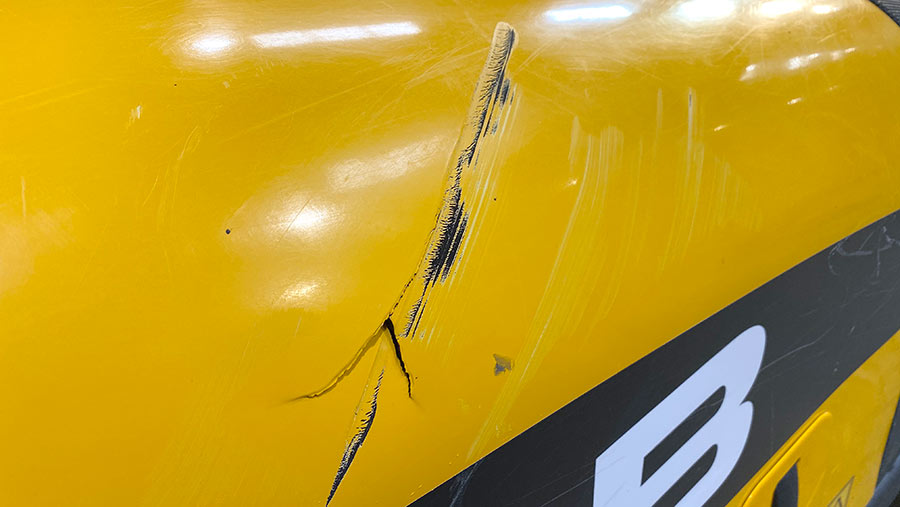
Also, the family of Loadalls our 536-70 originates from suffers from corrosion around the bottom panel of the engine pod, which gets blasted with grime and is subjected to regular scrapes.
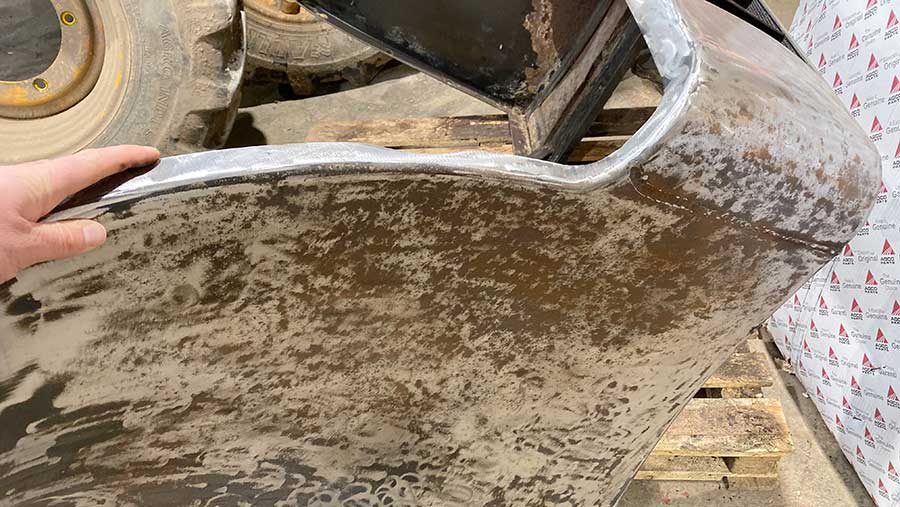
The panel is also prone to cracking around its fixing points, so take a look underneath and check for damage.
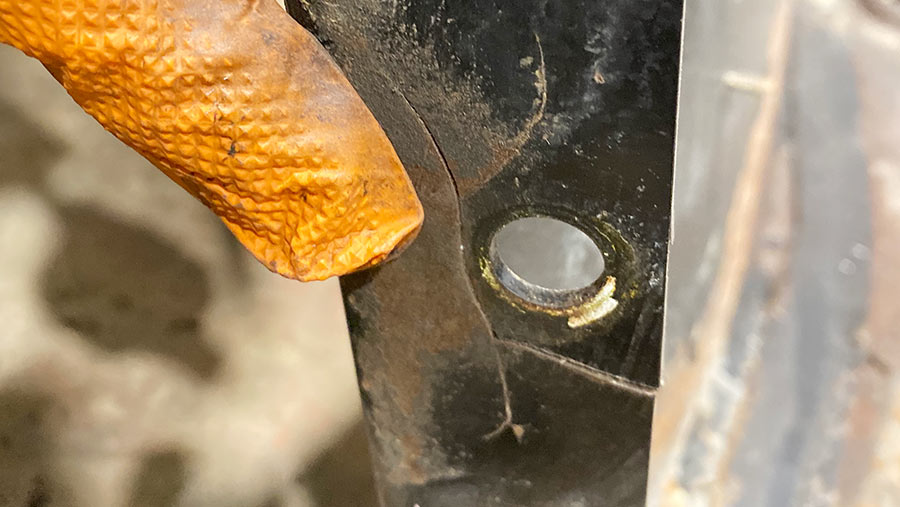
The whole panel can be ground down to the bare steel and covered in a protective coating for as little as £100, which should last for a good few years after.
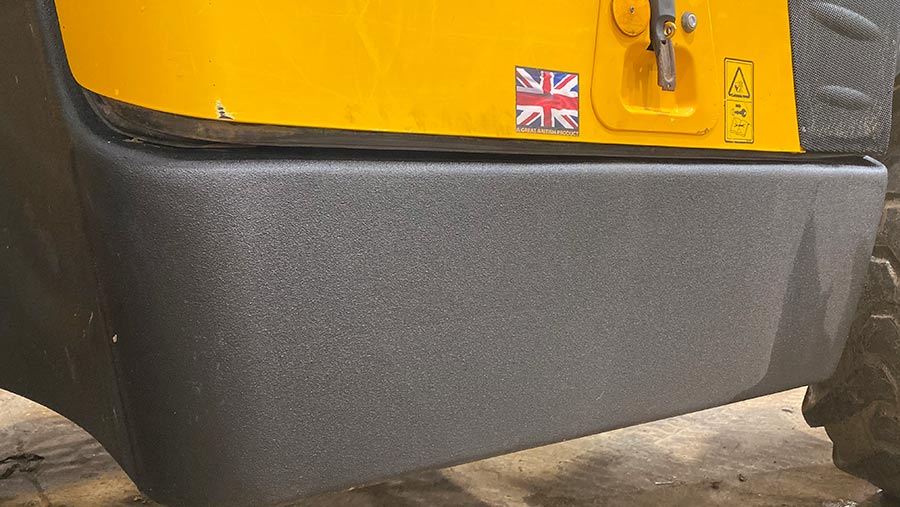
Another common place to find corrosion on the 536-70 is around the bottom of the cab door, and it’s almost inevitable on a machine of this age.
A rub down and respray will cost roughly £150. In worst cases, the whole door can be replaced for about £900.
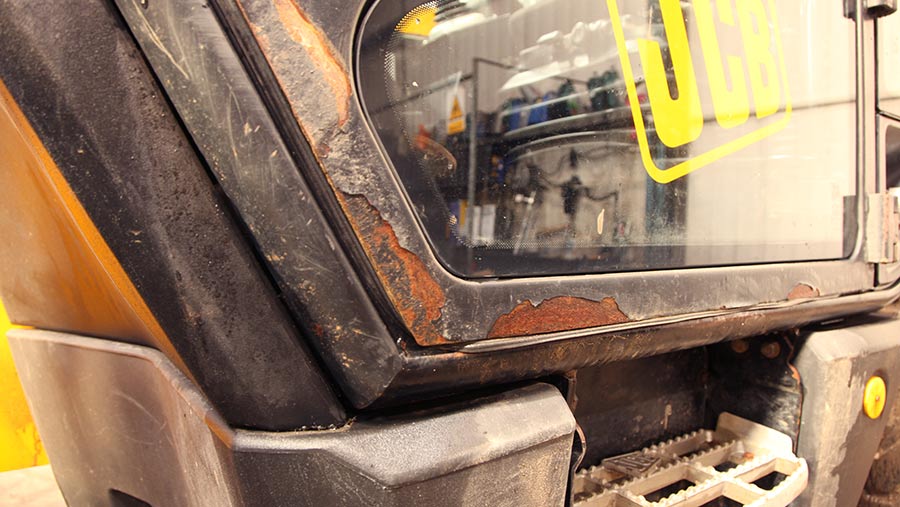
Look out for a clean and clear vehicle identification (VIN) plate to the rear of the machine, which is necessary to pass a Loler test.
Buyers should also check that serial numbers on the VIN match serial numbers displayed elsewhere, such as in cab windows. Where there are discrepancies, a HPI vehicle check is recommended.
Our model’s VIN plate was peeling away in places and would require a replacement to pass its test. This would cost about £130.
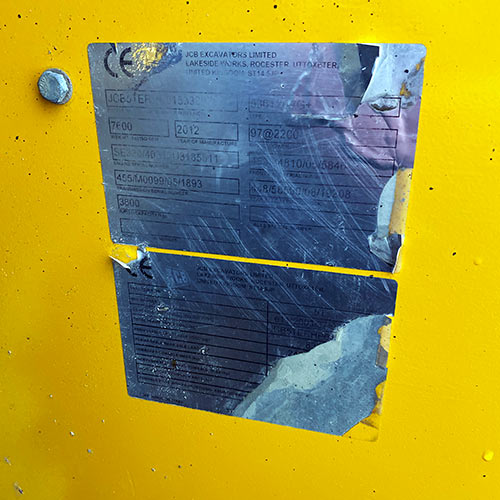
VIN in poor condition
Similarly, safety stickers that are placed around parts of the machine are also a requirement of Loler and these should all be present and correct.
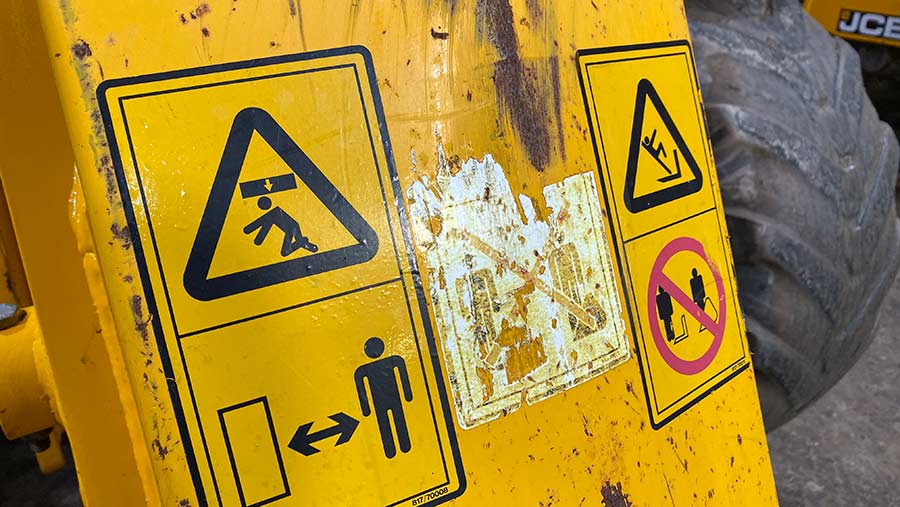
Engine
The 536-70 has a range of different engines, depending on the spec. Ours is an “Agri Plus”, so has JCB’s own Stage 3b 4.4-litre power unit in the engine pod, kicking out 125hp.
Mr Scruton says these are generally bulletproof and rarely give any major issues, particularly as the cooling system uses a hydraulically driven variable-speed fan, so doesn’t suffer the overheating issues seen in older or competitor side-sitting machines.
As a result, any potential buyer should just check the basics, such as oil and coolant levels, and run the engine up to uncover any signs of smoke, rattles or bangs that might be cause for concern.
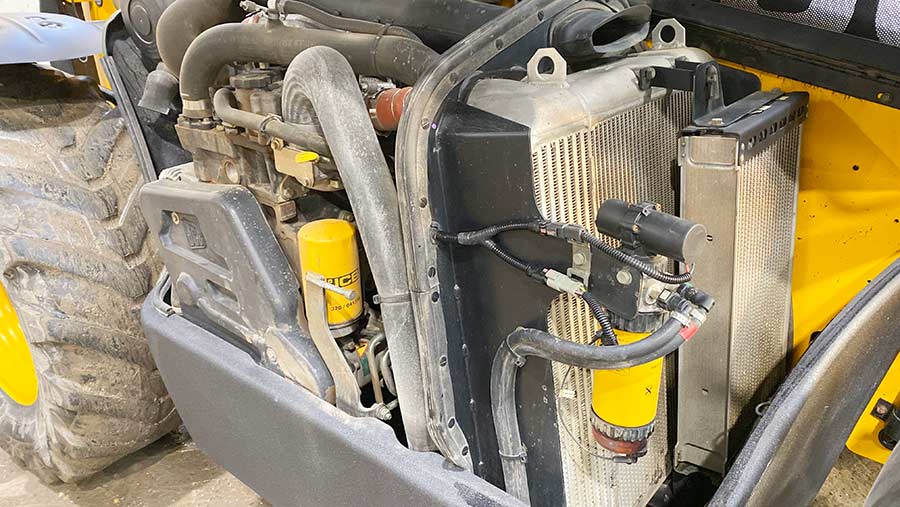
The firm will routinely change the auto tensioner on the flat belt running the alternator and water pump on any second-hand machine that comes through the workshop.
Mr Scruton suggests any private buyer does the same, with the part itself costing just £55.
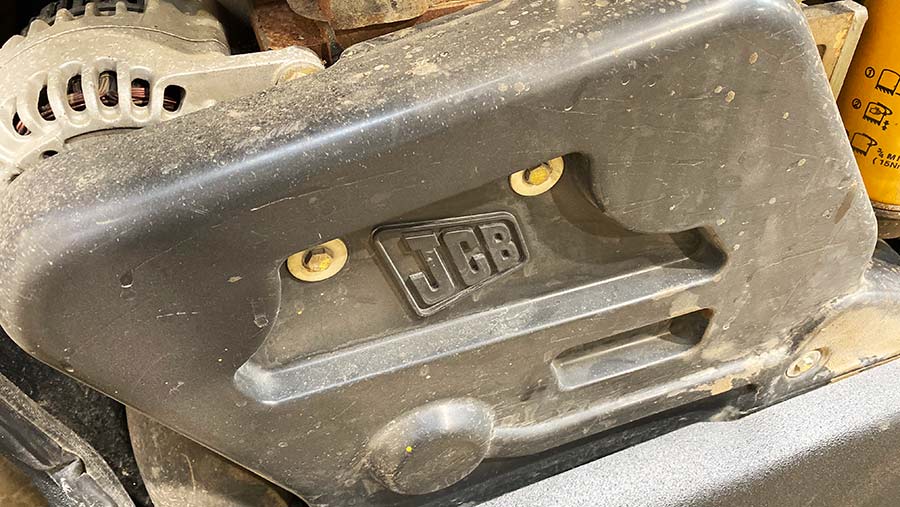
Transmission
The 536-70 Agri Plus lays down the engine’s power using a four-speed powershift transmission with torque converter.
This offers four forward and four reverse gears, all selected on the steering column-mounted directional control, with travel speeds up to 33kph.
Again, the transmissions will generally last the life of the machine if maintained properly and regularly, so look for evidence in the service history.
The hydraulic filter should have been changed every 500 hours and the oil dropped and changed every 1,000 hours. There is also a suction filter that should be cleaned during each service.
Check that all four forward and reverse gears engage properly.
A basic rebuild would start at £5,000 and, in worst cases, cost up to £10,000.
Boom and hydraulics
The boom is a spot where there can be unseen damage that could end up costing a second-hand buyer some serious cash.
The main boom should be raised and extending sections rocked to check for sideways and lateral movement. The wear pads designed to prevent this movement should also be checked for wear.
If the pads haven’t been shimmed out as they wear down, the excess movement can lead to cracking around the main pivot pin to the rear of the boom (though this tends to be rare).
This cracking can’t be seen without removing the main pivot pin and lifting the boom off the chassis, so if there is any sign the booms hasn’t been correctly maintained, it could mean a potentially expensive repair bill.
Any repair to cracking where the main pin is housed should be done by a welder certified to repair lifting equipment. It is likely to cost in excess of £1,000 to remove, patch and replace.
The wear pads at the front are usually the quickest to go. Shims to keep them snug against the boom are as little as £10 each and well worth the time and effort to fit the handful required as the wear pads reduce.
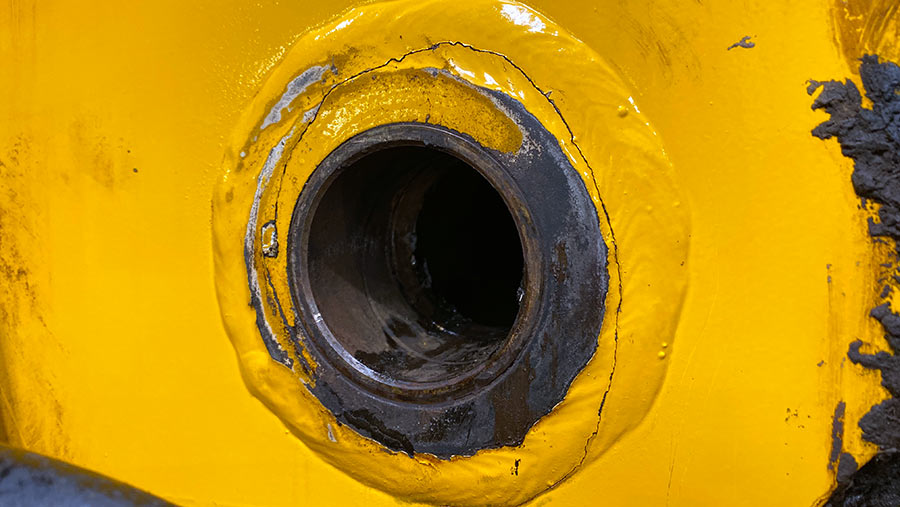
The wear pads at the front are usually the quickest to go. Shims to keep them snug against the boom are as little as £10 each and well worth the time and effort to fit the handful required as the wear pads reduce.
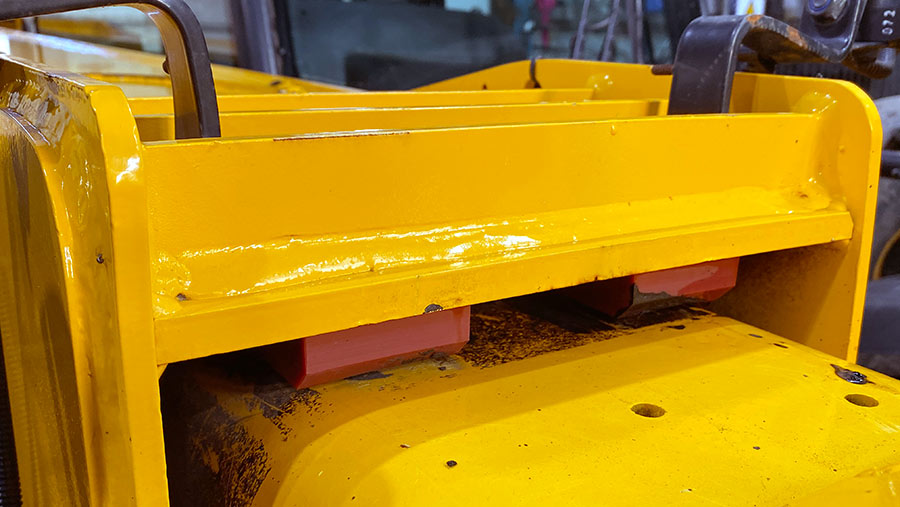
Where farms have used a different make of telehandler in the past, owners can sometimes opt to keep the same implement carriage on a new loader, and our 536-70 is a case in point.
The carriage is only rated to 3t, but the machine can lift up to 3.6, so the cost of replacing it with a genuine JCB carriage matched to its lifting capacity should be factored into any purchase price. This would cost just over £1,600.
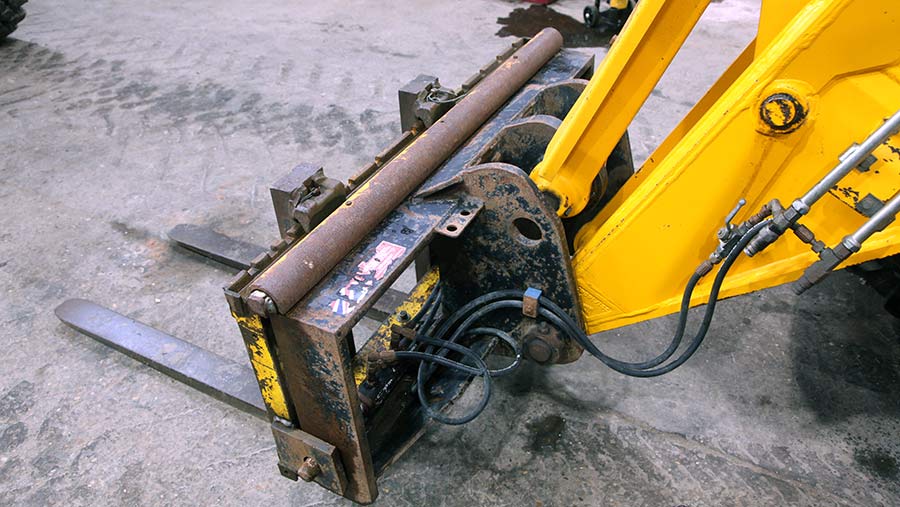
Damage or tampering with the load sensor switch, which engages the load sensor when the boom is extended, can be a sign that the machine’s boom may have been overloaded and should be treated with caution.
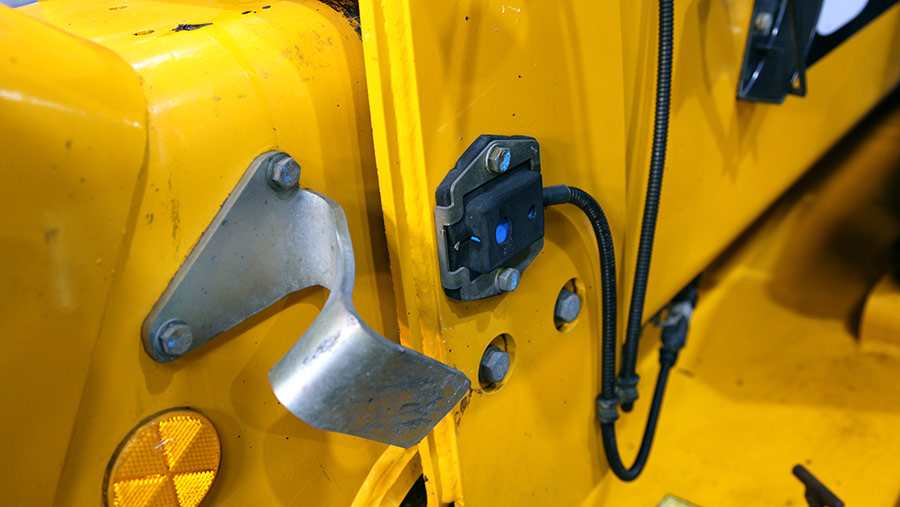
Obvious, basic checks should also be performed to ensure all up, down, extend, crowd and tilt functions are working and there are no visible hydraulic leaks or work pipes that might need replacing.
Lift the carriage up and tilt to about 45deg. Check for signs of cracking or wear in pins and bushes.
Axles and steering
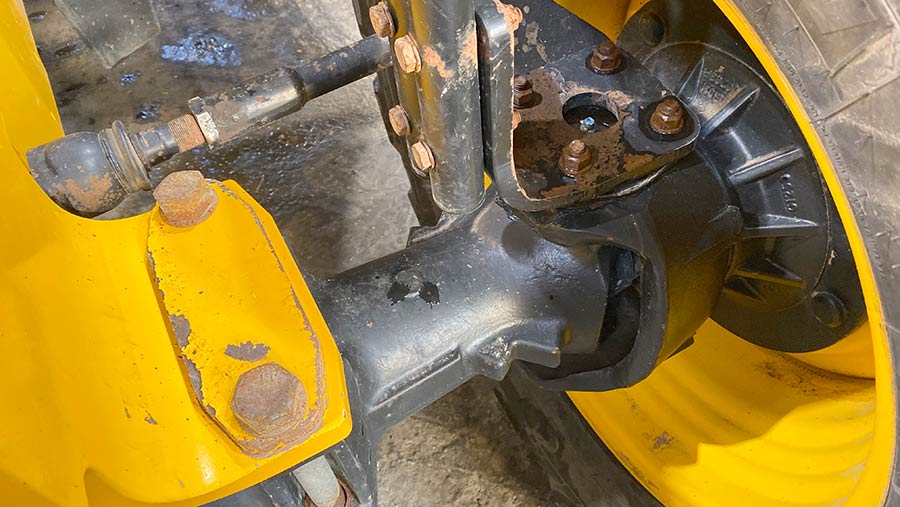
The front and then rear end of the telehandler should be lifted up and the axle kingpins checked for signs of play, along with the pivot point in the centre of the rear axle.
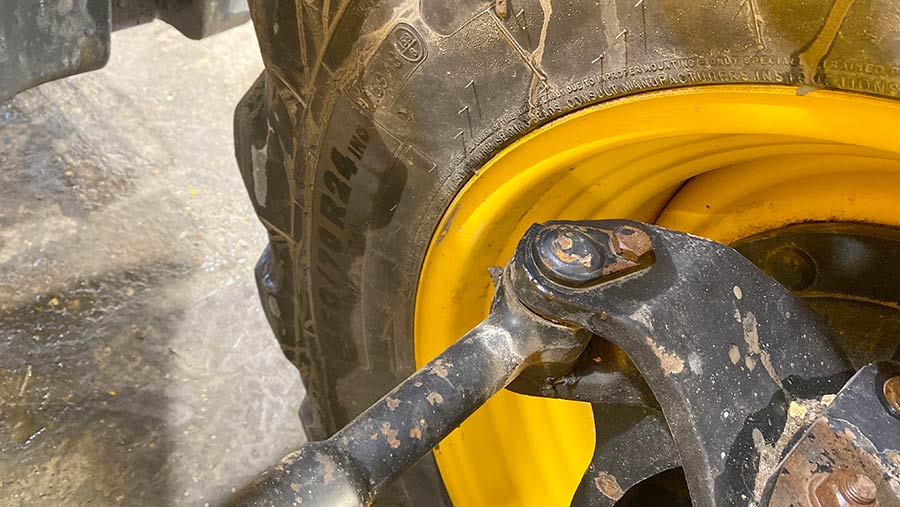
Steering bushes should also be checked, as these are often neglected with the grease gun and wear out fast.
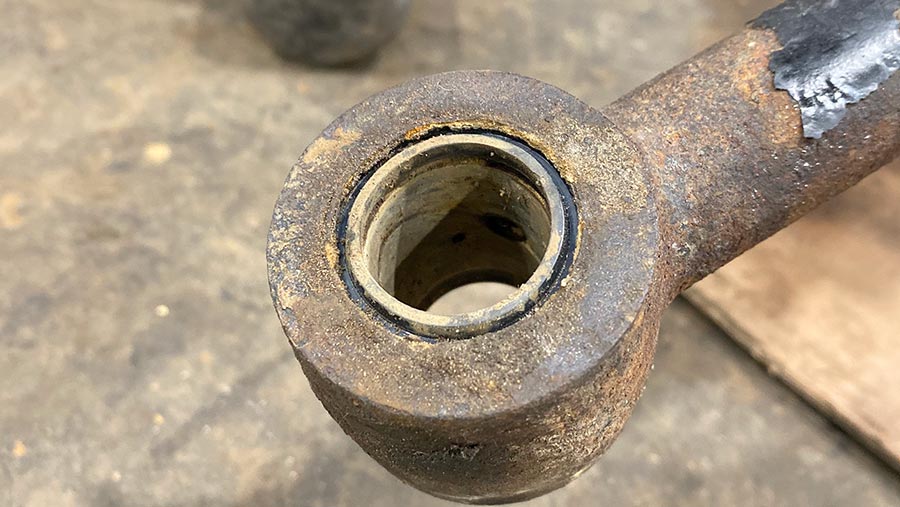
Brakes
Putting the wrong oil into the brake cylinder is a common mistake made by telehandler owners and this can wreck seals and the brake pack itself.
It should be filled with ISO 15 hydraulic oil and definitely not any corrosive dot 4 brake fluid.
Rebuilding the guts of the system will cost about £600 in parts alone and highlights the value of proper maintenance.
Perform some emergency stops to ensure the braking system is working as it should and try the handbrake on a slope, if possible.
Cab
Not much to report inside the cab, but buyers are advised to check the rubber seals around the joystick switches. If these wear and break, dust and dirt can get into the electrics and may require replacement. A complete joystick can cost more than £850.
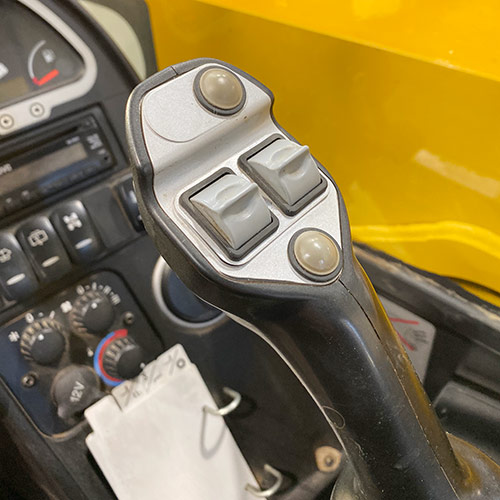
Rubber seals around switches
The base of the seat is also a place to look for wear, with operators jumping in and out of the cab often leading to an unsightly hole exposing the foam cushion.
Check all mirrors are present and correct and wipers are working, as these will be assessed in any Loler test.
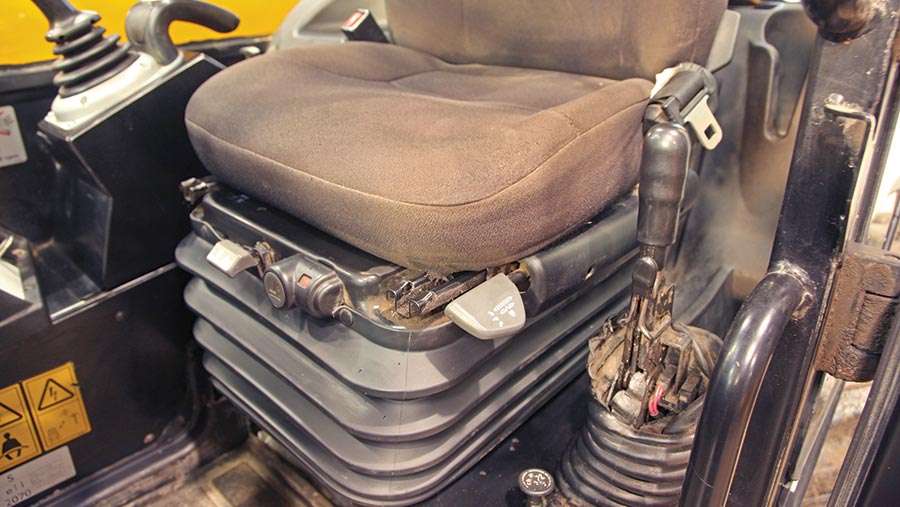
Hitch
Basic stuff – check the hitch hook itself is not too worn. There is typically a line that marks the level or wear tolerance to adhere to health and safety standards and our example still had plenty left.
Also ensure that the hydraulics and locking mechanism are all fully functioning.
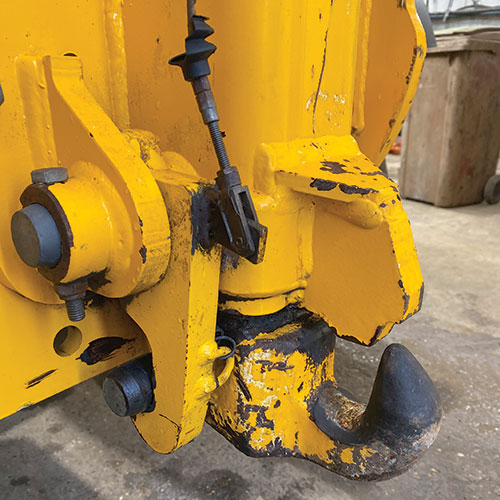
Telehandler hitch
It is worth checking for proof the telehandler is homologated for towing on the road, which is required by law. A tell-tale sign that a JCB handler is good to tow is the presence of a hitch on the front end of the chassis.
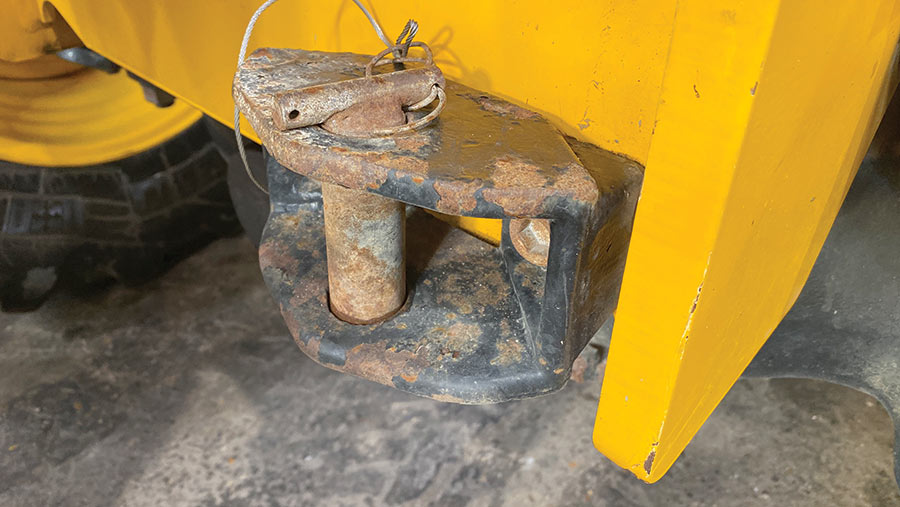
Tyres
Tyres on second-hand telehandlers of this age and with plenty of hours on the clock may well be showing signs of wear.
For those only planning on using the machine around a concrete yard, this may not be a concern, so just check that sidewalls are in good condition.
For those looking to use the machine in a range of conditions, high tyre wear can be a bargaining chip when settling on final price.
Our example had just 10% remaining and would likely need a new set in this situation, costing about £1,600.
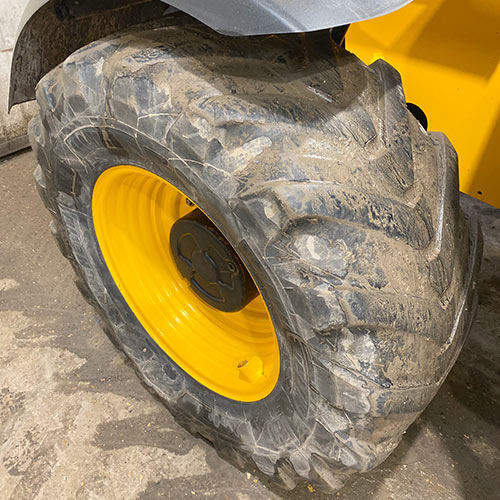
Tyre wear
Also take a look at mudguards and ensure they are in good nick.
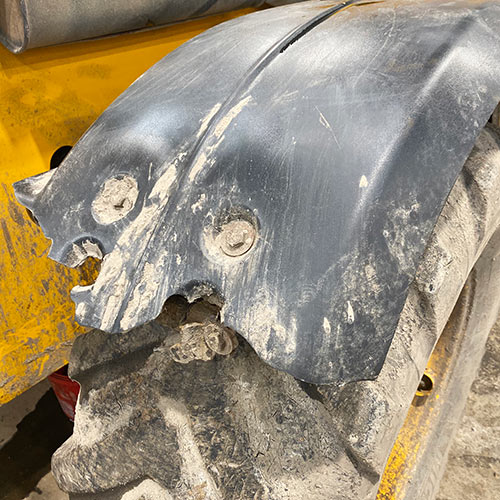
Damaged mudgard
What else is on offer for £30,000? |
|||
|
|
Merlo TF34.7 Plus* |
Manitou MLT 634-120* |
JCB 536-70 Agri Plus |
|
Max lift height (m) |
7 |
6 |
7 |
|
Max lift capacity (kg) |
3,400 |
3,400 |
3,600 |
|
Lift to full height (kg) |
3,400 |
3,400 |
2,500 |
|
Boom suspension |
Yes |
Yes |
No (optional) |
|
Hydraulic pump (litres/min) |
Gear pump/105 |
Variable/135 |
Variable/140 |
|
Engine |
102hp Deutz |
120hp Mercedes |
125hp JCB |
|
Transmission |
Hydrostatic |
Six-speed powershift |
Four-speed powershift |
|
Hours |
3,600 |
5,100 |
4529 |
|
*Source: Green Handlers UK, Scarborough |
|||

